Harmonic Phase Sequence
In order to understand network problems with triplen harmonics, first let’s have a short explanation of harmonic phase sequence and third harmonics. Power engineers have traditionally used symmetrical components to help describe 3-phase system behavior. The 3-phase system is transformed into three single-phase systems that are much simpler to analyze.
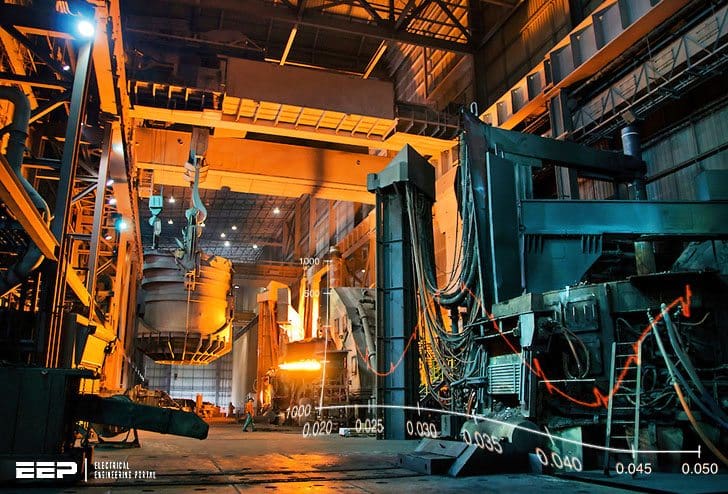
The method of symmetrical components can be employed for analysis of the system’s response to harmonic currents provided care is taken not to violate the fundamental assumptions of the method.
The method allows any unbalanced set of phase currents (or voltages) to be transformed into three balanced sets.
The positive sequence set contains three sinusoids displaced 120 from each other, with the normal A-B-C phase rotation (e.g., 0, −120, 120 ). The sinusoids of the negative-sequence set are also displaced 120 , but have opposite phase rotation (A-C-B, e.g., 0, 120, −120 ). The sinusoids of the zero sequence are in phase with each other (e.g., 0, 0, 0).
In a perfect balanced 3-phase system, the harmonic phase sequence can be determined by multiplying the harmonic number h with the normal positive sequence phase rotation.
Since a distorted waveform in power systems contains only odd harmonic components, only odd harmonic phase sequence rotations are summarized below:
- Harmonics of order h = 1, 7, 13, … are purely positive sequence.
- Harmonics of order h = 5, 11, 17, … are purely negative sequence.
- Triplens (h = 3, 9, 15, …) are purely zero sequence.
Triplen Harmonics
Triplen harmonics are the odd multiples of the third harmonic (h = 3, 9, 15, 21, . . .). They deserve special consideration because the system response is often considerably different for triplens than for the rest of the harmonics.
Two typical problems are overloading the neutral and telephone interference. One also hears occasionally of devices that misoperate because the line-to-neutral voltage is badly distorted by the triplen harmonic voltage drop in the neutral conductor.
For the system with perfectly balanced single-phase loads illustrated in Figure 1, an assumption is made that fundamental and third harmonic components are present. Summing the currents at node N, the fundamental current components in the neutral are found to be zero, but the third harmonic components are three times the phase currents because they naturally coincide in phase and time.
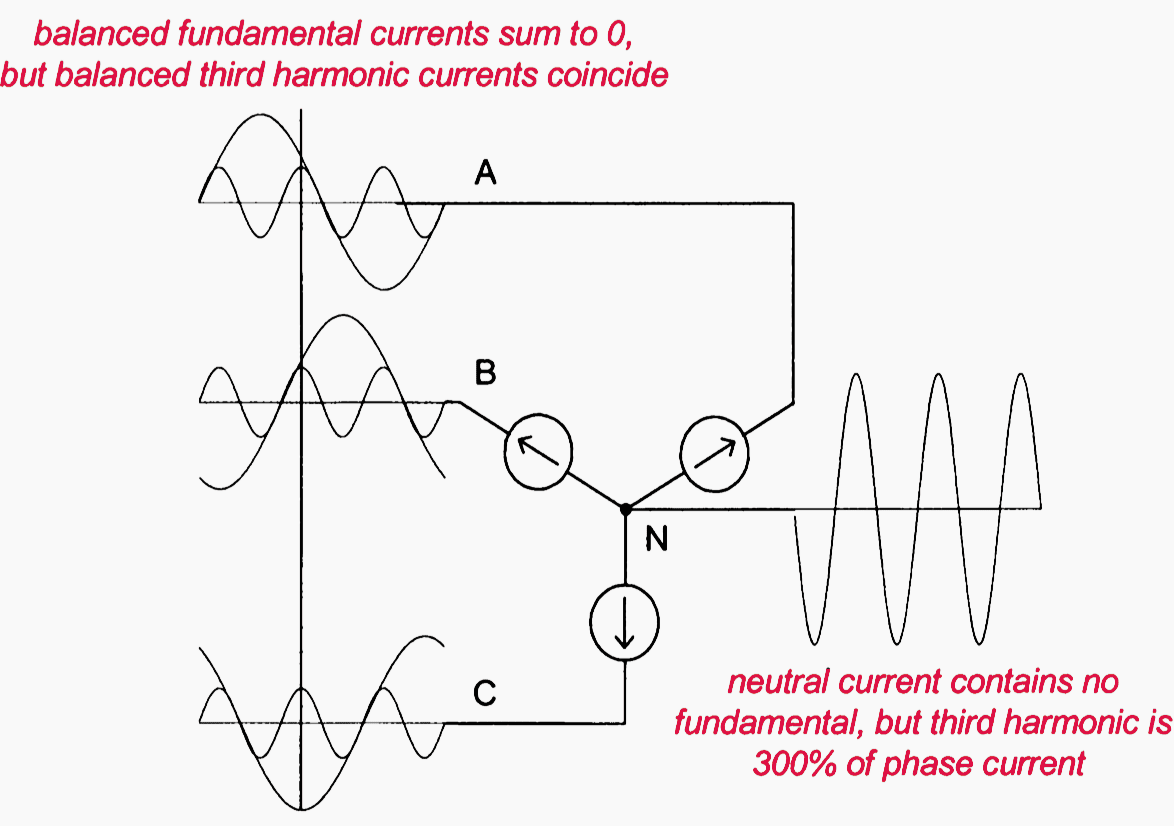

Triplen Harmonics in Transformers
Transformer winding connections have a significant impact on the flow of triplen harmonic currents from single-phase nonlinear loads. Two cases are shown in Figure 2. In the wye-delta transformer (top), the triplen harmonic currents are shown entering the wye side.
Since they are in phase, they add in the neutral.
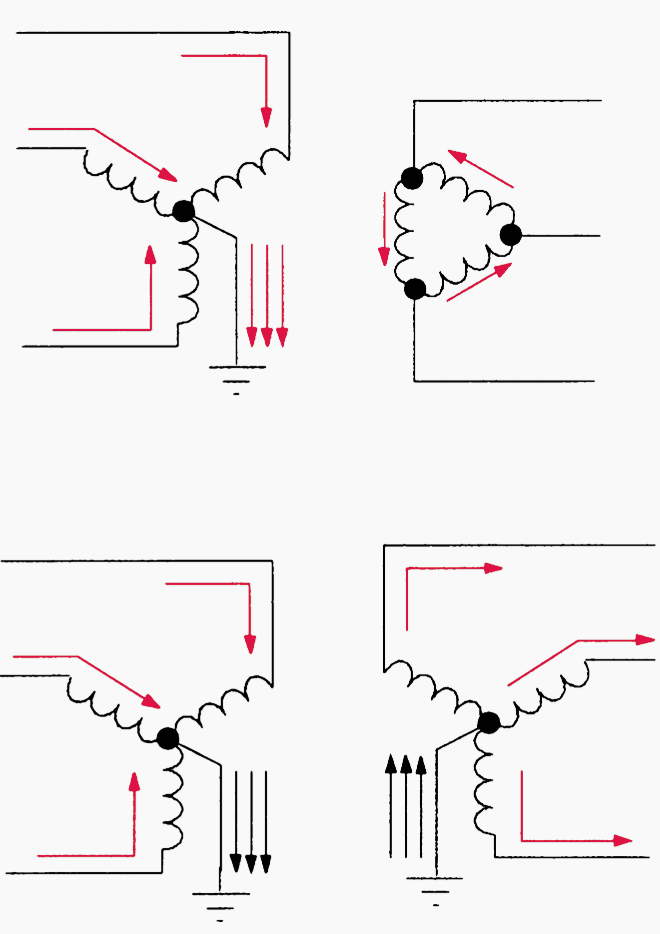

The delta winding provides ampere-turn balance so that they can flow, but they remain trapped in the delta and do not show up in the line currents on the delta side. When the cur- rents are balanced, the triplen harmonic currents behave exactly as zero-sequence currents, which is precisely what they are.
This type of transformer connection is the most common employed in utility distribution substations with the delta winding connected to the transmission feed.
They will be present in equal proportion on both sides. Many loads in the United States are served in this fashion.
Some important implications of this related to power quality analysis are:
Implication #1 – Transformers, particularly the neutral connec- tions, are susceptible to overheating when serv- ing single phase loads on the wye side that have high third harmonic content.
Implication #2 – Measuring the current on the delta side of a transformer will not show the triplens and, therefore, not give a true idea of the heating the transformer is being subjected to.
The flow of triplen harmonic currents can be interrupted by the appropriate isolation transformer connection.
Implication #3 – Removing the neutral connection in one or both wye windings, blocks the flow of triplen harmonic current. There is no place for ampere-turn balance. Likewise, a delta winding blocks the flow from the line.
One should note that three-legged core transformers behave as if they have a “phantom” delta tertiary winding. Therefore, a wye-wye with only one neutral point grounded will still be able to conduct the triplen harmonics from that side.
These rules about triplen harmonic current flow in transformers apply only to balanced loading conditions. When the phases are not balanced, currents of normal triplen harmonic frequencies may very well show up where they are not expected.
The normal mode for triplen harmonics is to be zero sequence. During imbalances, triplen harmonics may have positive or negative sequence components too.


One notable case of this is a 3-phase arc furnace. The furnace is nearly always fed by a delta-delta connected transformer to block the flow of the zero sequence currents, as shown in Figure 3. Thinking that third harmonics are synonymous with zero sequence, many engineers are surprised to find substantial third harmonic current present in large magnitudes in the line current.
However, they are not zero sequence currents. The third harmonic cur- rents are equal amounts of positive and negative sequence currents. But to the extent that the system is mostly balanced, triplens mostly behave in the manner described.
What is the Notching?
Notching is a periodic voltage disturbance caused by the normal operation of power electronics devices when current is commutated from one phase to another. Since notching occurs continuously, it can be characterized through the harmonic spectrum of the affected voltage.
However, it is generally treated as a special case. The frequency components associated with notching can be quite high and may not be readily characterized with measurement equipment normally used for harmonic analysis.
Figure 3 above shows an example of voltage notching from a 3-phase converter that produces continuous DC current. The notches occur when the current commutates from one phase to another. During this period, there is a momentary short circuit between two phases pulling the voltage as close to zero as permitted by system impedances.
Harmonics for Arc Furnace Facilities (Webinar)
Arc furnace installations are notorious for having some of the most unconventional power quality problems in any application.
Reactive power compensation is extremely important for many reasons in this kind of facilities, but it can also be a more complex affair than installing traditional notch filters because of the uncharacteristic harmonics present due to the arc furnace itself.
Reference // Power quality and reliability by Surya Santoso, Mark F. McGranaghan and Roger C. Dugan




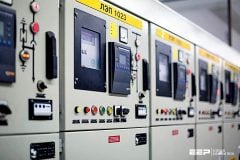
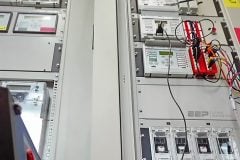
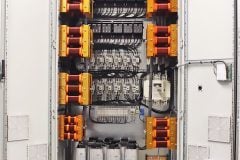
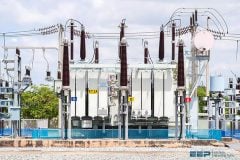
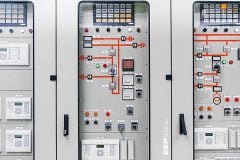


Is it possible to earth transformer with stainless steel material?
Does SIEMENS or ABB use double trip coil in M.V Switchgear?
I would appreciate if you send me sample drawing or standard about this.
where we use this kind of circuit? any special reason?
thank you very much in advance.
Thank you very much, the standards used by IEEE 1992 or 2014
Thank you, very nice explanation
very good article, very easy to understand thank you
Exceptional work in this field by helping novice engineers like me
your service is commendable in elevating the IQ level of electrical engineers Globaly